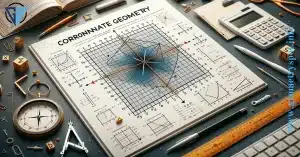Unveiling the Secrets of the Judgment Theorem for Similarity of Triangle Angles: A Comprehensive Guide

These simple yet complex three-sided polygons have fascinated mathematicians and philosophers for centuries. From the grandeur of the Egyptian pyramids to the essential calculations in modern computer graphics triangles are everywhere. But hang on! We’re here to dive into something more specific: the Judgment Theorem for the Similarity of Triangle Angles. This theorem is a jewel in the crown of geometry, so grab your compasses and protractors; we’re going on an academic adventure!
The Basics of Similarity

Understanding Ratios
First things first, let’s talk about ratios. Think of them as the building blocks for understanding the Judgment Theorem. In simpler terms, a ratio is just a relationship between two numbers. Easy-peasy, right?
Proportional Sides
Now, if two triangles have sides in the same ratio, those triangles are similar. So, the concept of proportional sides is like the peanut butter to the jelly of ratios essential!
What is the Judgment Theorem?
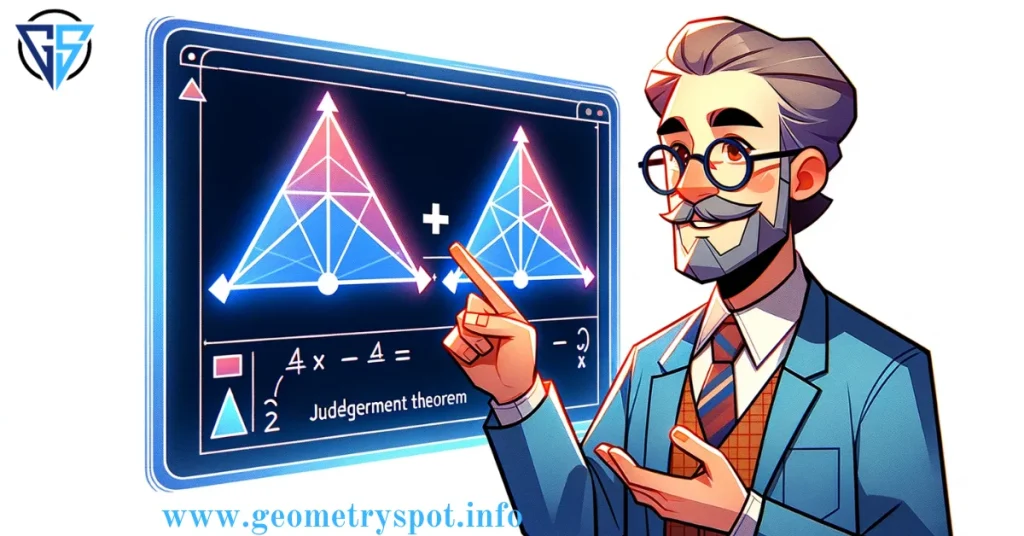
Origins and Initial Concepts
You might be scratching your head, wondering what this fancy term is all about. Don’t worry; you’re not alone! The Judgment Theorem is a cornerstone concept that helps us determine whether triangles are similar solely based on their angles. Mind-blowing, isn’t it?
Judgment Theorem for Similarity of Triangle Angles

Special Cases and Real-world Applications
Whoa, Nelly! Special cases do exist, like when two triangles have a couple of congruent angles. In such cases, the Judgment Theorem swoops in like a superhero and declares them similar. And it’s not just textbook stuff; this theorem has real-world applications, like in navigation and architecture.
Geometry Spot is a virtual platform designed to explore and learn about geometry. It provides interactive tools and resources for students and enthusiasts to delve into the fascinating world of shapes, angles, and spatial relationships. With Geometry Spot, you can unlock the secrets of geometry from the comfort of your computer or device.
Mathematical Proof of the Theorem
Alright, brace yourselves for this one. The proof for the Judgment Theorem for the Similarity of Triangle Angles involves some mind-bending math. But worry not! Once you get the hang of it, it’s as easy as pie.
Examples to Illustrate the Theorem
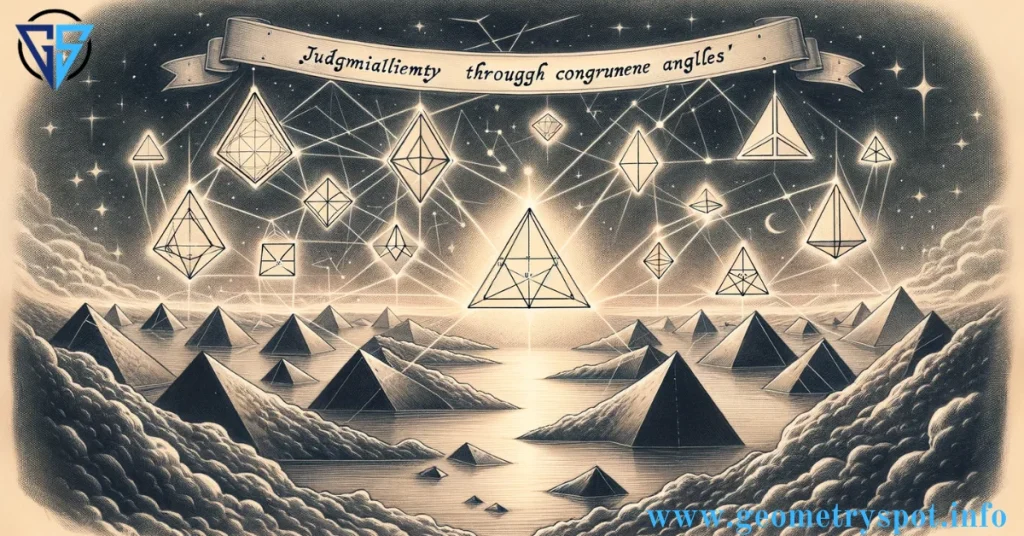
High School Math
Remember those dreaded math problems in high school? Well, you’d have cruised through them had you mastered this theorem. It simplifies complex problems and cuts your calculation time in half!
Real-world Scenarios
Enough of the school stuff; let’s get real! Engineers and architects use this theorem to build structures that stand the test of time.
Importance in Geometry
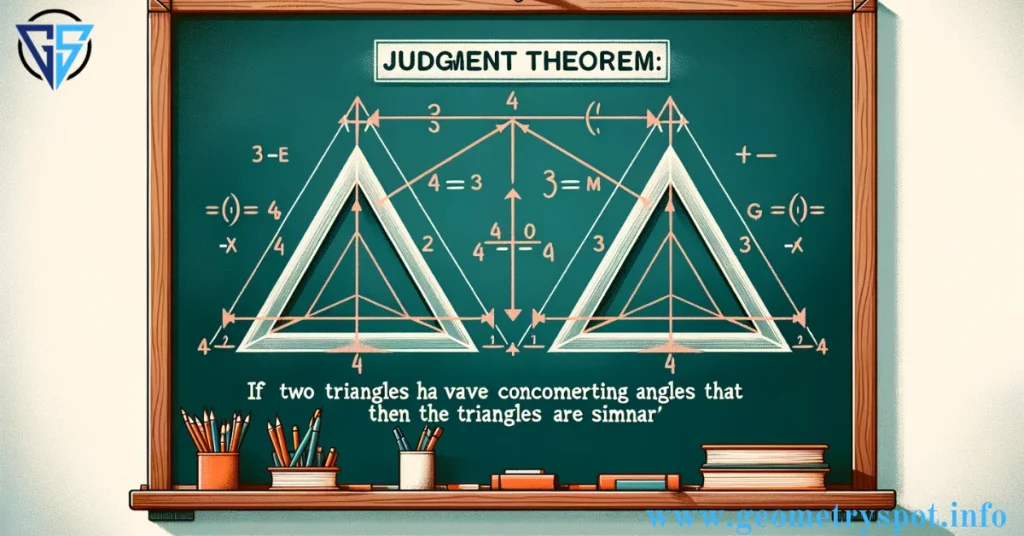
There is no beating around the bush here; this theorem is pivotal in geometry. It connects dots, both literally and figuratively, and forms the bedrock of many other geometric concepts.
Beyond the Classroom
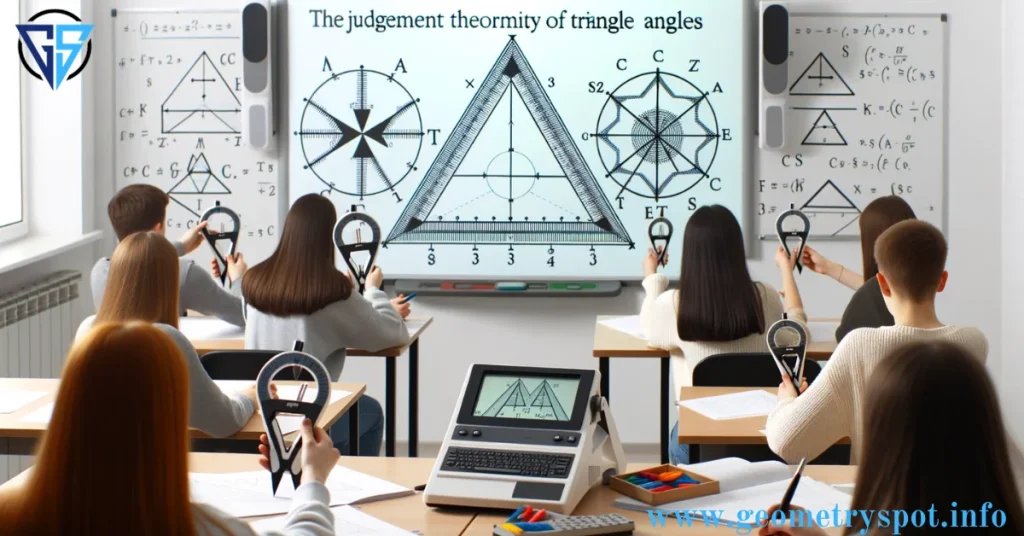
Engineering
Let’s take a field trip outside the classroom. Engineers rely on the Judgment Theorem to make precise calculations that can be a matter of life and death.
Astronomy
Believe it or not, even astronomers use this theorem to calculate distances between celestial bodies.
Judgment Theorem in 3D Geometry
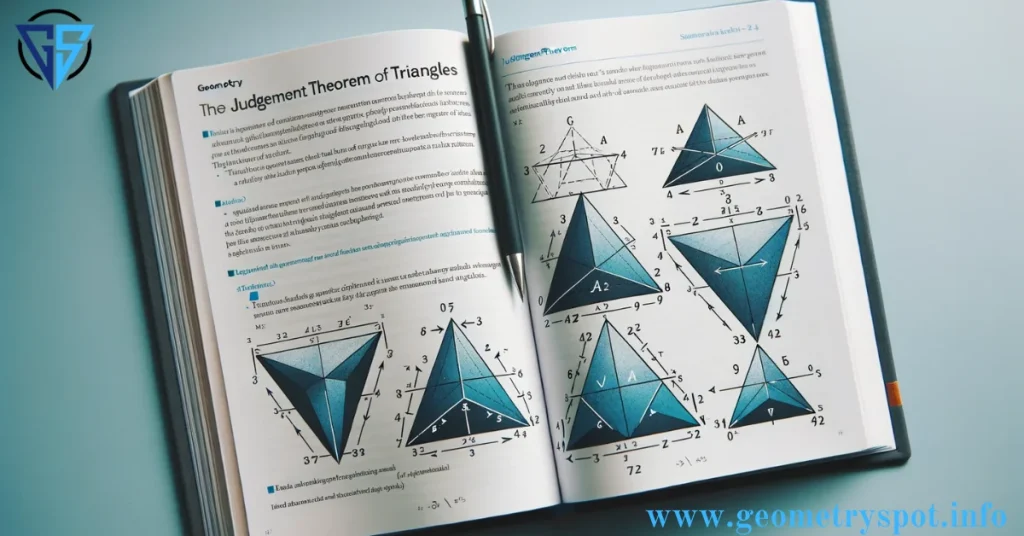
Hold your horses! We’re not done yet. This theorem also extends its magic to 3D geometry, adding another layer of complexity and wonder.
Criticisms and Limitations
Let’s be fair and balanced; no theorem is perfect. There are certain limitations and criticisms, but the theorem’s utility and brilliance far overshadow them.
What Are Parallel Lines? Parallel lines are a fundamental concept in geometry. They are two straight lines that run in the same direction and will never intersect, regardless of how far they extend. Parallel lines have the same slope and maintain a consistent, equal distance apart. Understanding parallel lines is crucial for various geometric and mathematical applications.
Theorem: The Sum of Angles in a Triangle is 180 degrees
Introduction
Before we get down to the nitty-gritty, let’s set the stage. We’re talking about a simple, plain-old triangle here three sides, three angles, and nothing fancy. Got it? Good, let’s move on.
Basic Setup
Imagine you have a triangle let’s call it ABC, for simplicity’s sake. Now, for the sake of the argument, let’s extend one of the sides; say we extend AB to a point D outside the triangle.
The Actual Proof
Alright, pay attention now; here comes the magic. First, make angle ADC equal to angle BAC, and make angle ACD equal to angle ACB. Basically, you’re transferring the angles from the triangle to the exterior angle at point D.
Why This Works
If you’re scratching your head, wondering why we did that, bear with me. By doing this, we’ve made triangles ABC and ACD similar by the Angle-Angle (AA) criterion for similarity.
Bringing It Home
Here’s the kicker. Because of the similar triangles, angle ACD + angle ADC + angle DAC adds up to 180 degrees. Why? Because they’re on a straight line, and straight lines have 180-degree angles. Simple as that!
Now, replace angle ADC with angle BAC and angle ACD with angle ACB. What do you get? That’s right! Angle BAC + angle ACB + angle BCA = 180 degrees.
Wrapping It Up
And there you have it, proof that the sum of angles in a triangle is 180 degrees. Told you it was a piece of cake!
Exploring the Pythagorean Theorem: The Relationship that Changed Geometry Forever
Introduction: What’s the Big Deal About the Pythagorean Theorem?
Heads up, math enthusiasts and geometry Spot! If you’ve ever puzzled over how the lengths of the sides in a right-angled triangle relate to one another, you’re in for a treat. Enter the Pythagorean Theorem, a mathematical rule that’s as fundamental as apple pie is to American culture. But what’s the story behind it? How do you prove it? Hold your horses; we’re getting to that!
Why Should You Care?
At first glance, you might think, “Well, that’s just a bunch of numbers and shapes.” But oh boy, are you wrong! This theorem is like the Swiss Army knife of geometry. From construction and engineering to computer graphics, the Pythagorean Theorem is everywhere. So, let’s dive in!
The Nuts and Bolts: Defining Terms
Before we dig deeper, let’s get our terminology straight. In a right-angled triangle:
- The Hypotenuse is the side opposite the right angle.
- The other two sides are often called the Adjacent and Opposite sides or simply Legs.
The Pythagorean Theorem Unveiled
Here it is, folks: In a right-angled triangle, the square of the hypotenuse is equal to the sum of the squares of the other two sides. In mathematical jargon, that’s �2+�2=�2a2+b2=c2, where �c is the hypotenuse and �a and �b are the legs. Sounds like a mouthful, but stick with me!
Proof: Why the Pythagorean Theorem Holds Water
- Take a right-angled triangle, let’s call it ABC, where C is the right angle.
- Draw squares on each side of the triangle.
- The area of the square formed by the hypotenuse (AB) is ��2AB2.
- The areas of the squares on the legs (AC and BC) are ��2AC2 and ��2BC2, respectively.
- Draw a perpendicular from C to AB, meeting AB at point D.
- The area of square AB can also be seen as the sum of the areas of two smaller triangles formed (ACD and BCD).
- Crunch the numbers, and you’ll find that ��2=��2+��2AB2=AC2+BC2.
Bingo! You’ve just witnessed the magic of the Pythagorean Theorem!
Unlocking the Secrets of Isosceles Triangles: Where Equal Sides Meet Equal Angles
Introduction: An Angle on Isosceles Triangles
Ah, the isosceles triangle! This geometric wonder has long fascinated mathematicians, architects, and even artists. But why all the hype? What makes isosceles triangles so interesting? Well, there’s a cool theorem that links the triangle’s equal sides to its equal angles, and it’s an eye-opener! Ready to be amazed? Let’s dive in.
The Basics: What’s an Isosceles Triangle, Anyway?
To get the ball rolling, let’s start with the basics. An isosceles triangle is one where two sides are of equal length. Simple. But that’s just the tip of the iceberg.
Angles and Sides: A Happy Marriage
In an isosceles triangle, the angles opposite to the equal sides are also equal. That’s what we call the “Isosceles Triangle Theorem.” Let’s dig a bit deeper to understand why this is the case.
Proof: The Heart of the Matter
- Take an isosceles triangle, say ABC, with AB = AC.
- Draw an altitude from vertex B to the opposite side, meeting it at point D.
- Now you’ve got two right-angled triangles, ABD and ACD.
- Because AB = AC and AD are common, the two triangles are congruent (thanks to the Hypotenuse-Leg theorem!).
- So, angle ABD = angle ACD by CPCT (Corresponding Parts of Congruent Triangles are equal).
Voila! You’ve just proved that in an isosceles triangle, angles opposite to equal sides are equal.
The Parallel Lines Property Theorem, a significant principle in geometry, states that when a pair of parallel lines is intersected by a transversal, certain angle relationships emerge. These include corresponding angles being congruent, alternate interior angles being congruent, and same-side interior angles being supplementary. This theorem is crucial for solving various geometric problems and proving theorems involving parallel lines.
Conclusion and Final Thoughts
Well, there you have it the Judgment Theorem for the Similarity of Triangle Angles in a nutshell. From its profound implications in geometry to its practical applications in the real world, this theorem truly is a game-changer. So, the next time you look at a triangle, you’ll see it in a whole new light.
Frequently Asked Questions
How does the theorem affect my daily life?
Great question! You might think, “Why should I care about some high-falutin’ theorem?” But hear me out: this theorem is like the unsung hero behind a lot of everyday activities. Ever used Google Maps to find the quickest route? You’ve indirectly used the principles of this theorem. Designers, engineers, and architects use it to create user-friendly spaces and sturdy structures. So, while you may not use it directly, it has a significant impact on your daily life.
How do you prove the theorem?
Ah, the meat and potatoes of any good theorem it’s proof! In the realm of geometry, proofs can be intricate dances of logic and math. But don’t let that scare you. The Judgment Theorem for the Similarity of Triangle Angles can be proven through a series of steps that involve angle measurements and proportional sides. The end goal is to show that if two angles in one triangle are equal to two angles in another triangle, the triangles are similar. If you’re interested, there are tons of resources out there to help you get into the nitty-gritty of the proof!
What are the real-world applications of the theorem?
You’ll be amazed at how this theorem has its fingerprints all over the real world. It’s instrumental in fields like engineering, architecture, and even astronomy. For example, civil engineers may use it to design bridges or tunnels, ensuring that they’re structurally sound. In astronomy, the theorem is used to calculate distances between celestial bodies, aiding in our understanding of the universe. Talk about out of this world!
Is the theorem universally accepted?
Well, nothing is universally accepted ask a cat if it likes water. Jokes aside, the Judgment Theorem for the Similarity of Triangle Angles is widely accepted in the field of geometry and is taught in schools around the world. However, it’s worth noting that in some advanced areas of study or non-Euclidean geometries, variations or exceptions might exist. But for most of us, it’s a solid, reliable concept.
How is the theorem taught in schools today?
Back in the day, rote memorization was the name of the game. But teaching has evolved, thank goodness! Nowadays, interactive methods like dynamic geometry software are often used to install a deeper understanding. These tools allow students to manipulate shapes and angles, providing a hands-on learning experience. So, the Judgment Theorem for Similarity of Triangle Angles is taught as part of a more interactive and engaging curriculum.
How has the theorem evolved?
The essence of the theorem has remained largely unchanged since its inception, which speaks volumes about its validity. However, the methods used to explain and apply the theorem have evolved. With advancements in technology, we now have new ways to demonstrate the theorem’s principles. For example, computer models can now solve complex problems in seconds, problems that would have taken days or even weeks to solve in the past. The theorem itself might be old, but it’s constantly being applied in new and innovative ways.


